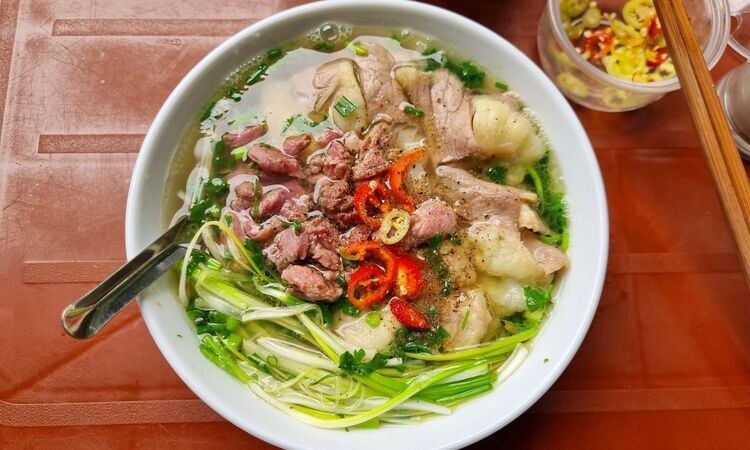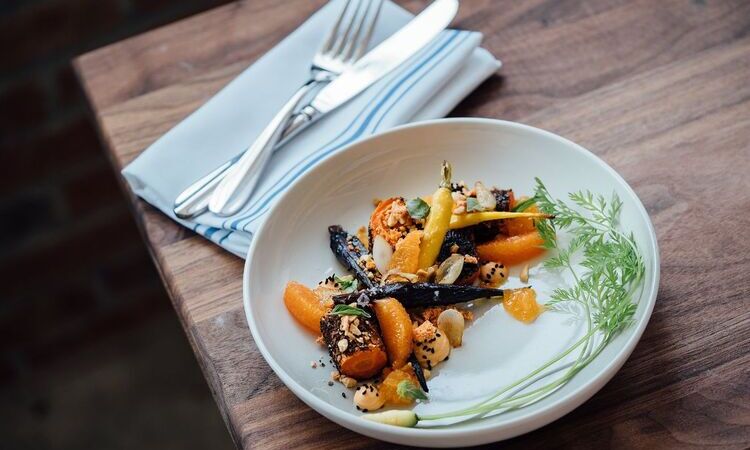Taste as Many Fruits as You Can in Southeast Asia!
Discover the tastiest Southeast Asian fruits in this detailed guide. We’ll tell you where you can find them and how you can eat them on your vacation.
While you are visiting Southeast Asia, you have a chance to not just see all the sights, but to indulge the rest of your senses too. Southeast Asian fruits are the delicious refreshments you need to invigorate your taste buds while you are exploring local markets. In fact, you will have the opportunity to try many different tropical fruits you might not find at your supermarket back home.
Facts about Southeast Asian Tropical Fruits
Here are some things to know about Southeast Asian fruits:
- Southeast Asian tropical fruits are exotic. They come in diverse shapes, colors, flavors and textures. Each offers a unique experience.
- In Southeast Asian cuisine, fruits are mainly considered desserts. In fact, family meals typically conclude with fruits.
- Tropical fruits in Southeast Asia are inexpensive. At a local farmer’s market or restaurant, you can purchase fruits that were locally sourced.
- Some types of Asian fruits are relatively easy to find in Western countries (at least if you have an Asian supermarket in your area), but others are harder to come by. You should give them a try while you are traveling so you do not miss out on your chance.
Where to Get Southeast Asian Tropical Fruits?

When you are visiting Southeast Asia, you can shop for tropical fruits at a supermarket or a farmer’s market. Restaurants also serve tropical fruits in some of their recipes.
We especially recommend picking up fruits at a local market if you can, often called a “wet market.” The reason for this name has to do with the wet ground. When local farmers and fishermen come to these markets to sell their products, they have to wash them first. This accounts for all the water everywhere.
Buying fruits from wet markets is a great way to support the community you are visiting while enjoying a refreshing and nutritious snack.
Fruits Not to Miss When Visiting Southeast Asia
1. Mangosteen

Mangosteen is the fruit that comes from the tree by the same name. No, it does not look anything like a mango. With its dark purple hue and roundish shape, it more closely resembles a plum. But when you cut it open, the flesh inside looks more like that of a citrus, but with a white color.
In terms of flavor, mangosteen can be described as mildly sweet with a bit of tangy sourness.
How to Eat It:
To eat a mangosteen, start by cutting it open with a knife, working your way around the fruit’s circumference. Once you have exposed the flesh of the fruit, you can pull apart the rind to access it. Now you can eat the individual sections the same way you would those of an orange.
While mangosteen is delicious on its own, you can also eat it as part of a fruit salad or atop some pudding.
Taste score: 8.9 (out of 10)
2. Longan

Next on our list of Southeast Asian fruits is the potassium-rich longan. It comes from a tree with the same name which is part of the same family of plants that produces lychee and rambutan fruits.
In fact, longan is a lot like lychee. In appearance, it is small, with a yellow rind. The flesh inside has a whitish color, and there is a large black seed in the middle. The taste is sweet, with some people comparing it to the flavor of dates.
How to Eat It:
If you want to eat a fresh longan fruit, slice it open with a knife and discard the seed. Scoop out the flesh and eat it, and then throw away the rind.
You can also eat longan dried; in fact, you will find it listed as an ingredient in certain soups and desserts.
Taste score: 8.0 but heavily fluctuates based on quality.
3. Rambutan

Speaking of rambutan, that is another Asian fruit you should definitely try when you are on your trip. In fact, this fruit, which grows on evergreen trees, is bound to catch your eye at the market with its striking and unusual appearance.
The skin of the rambutan fruit is a bright reddish hue with spiny hairs all over it. When you open the fruit, you will find the flesh is white.
If you enjoy grapes, you will undoubtedly love rambutan fruits, as they taste similar.
How to Eat It:
To eat rambutan, you will need to get the fruit out of its skin. Make a small slit with a knife, and then use your fingers to squeeze the fruit and push out the flesh. Then, extract the seed to discard it, and eat the flesh.
Try and purchase a “freestone” rather than a “clingstone” variety; these ones have seeds that are easy to remove. If you end up with a clingstone rambutan, it is easiest to remove the fruit from the skin, put it in your mouth, carefully chew it, and then spit the seed out when you find it.
You can also enjoy rambutan as an ingredient in curry, pudding, sorbet and other Southeast Asian recipes.
Taste score: 8.0 but certain kinds can be annoying to eat.
4. Durian

Durian is a fruit with a prickly rind and yellow flesh that seems to taste completely different to different people. The fruit produces a strong odor that drives many away. But if you can endure the smell long enough to eat it, you may be delighted by its flavor, which could remind you of custard, ice cream or caramel. You might pick up savory notes as well like garlic or cheese, which may ruin this fruit for you for eternity.
How to Eat It:
Using a knife, cut open the rind. Eat the flesh of the fruit, but avoid eating the raw seeds. You can also try durian desserts such as durian ice cream in Indonesia or durian candy in Malaysia.
Taste score: 8.2 or 2.4
5. Jackfruit

Jackfruit trees can be found growing throughout Southeast Asia. From them, the jackfruit is harvested, a fruit featuring yellowish flesh in a rough greenish rind. The flavor of jackfruit is comparable to banana crossed with pineapple—a true tropical delight.
How to Eat It:
Cut the jackfruit in half, and then cut the halves in half again. Pull back on the ends of each piece, pushing against the flesh in the middle (the same way you would with an orange). This will help to loosen the sections. Pull out the individual sections and eat them. Avoid eating the seeds.
You can eat jackfruit raw, or you can cook it and add it to a curry, salad, or other recipes. It is popular in vegetarian cuisine in place of meat.
Taste score: 7.4 but first try is often really good.
6. Mango
One of the fruits on this list that you are most likely to encounter in Western supermarkets is mango. But what you may not have realized is that mangos are native to South and Southeast Asia.

The mango is a fruit with pale orange flesh and skin with an orangey-reddish hue. The textures of mango fruits can range quite a bit, but the taste is consistently sweet.
How to Eat It:
To eat a mango, start by cutting it into four sections. Then, use a bowl to slice off the skin (if you push the edge of the bowl through the flesh right next to the skin, the skin will come off easily). Discard the pit in the center of the fruit.
Another way to consume mango is in a recipe for chutney, jam, salad, ice cream, or other condiments or dishes.
Taste score: 8.2
7. Star Apple
Not to be confused with star fruits, star apples are round fruits that are also sometimes referred to as “tar apples.” The skin of the fruits turns purple or pale green when they get ripe. The flesh inside is whitish-purplish, and tastes sweet.

How to Eat It:
Slice open the star apple to eat it. Take out the seeds and discard them. Then scoop the flesh out to enjoy. We do not see a lot of recipes using star apples; it is far more common to just eat the fruit on its own, frequently following a meal as a healthy dessert. While star fruits are tasty fresh, a lot of people like to freeze them and then eat them.
Taste score: 8.8 but you can get tired of it.
8. Lychee

Lychee is among the most famous tropical fruits from Asia. Ask someone to start naming Southeast Asian fruits, and there is a good chance that “lychee” will be the first word out of their mouth.
The shell of the lychee fruit is textured, with a reddish-pinkish hue. Opening the lychee shell reveals white flesh, at the center of which you will find a large seed. The fruit tastes sweet, and produces a faint aroma that may put you in mind of flowers.
How to Eat It:
You can use your hands to open up a lychee’s shell. Once you do, you will need to remove the seed. The most efficient way to do this is to use a knife to slice open the flesh. Once you throw away the seed and the shell, you can eat the fruit.
While browsing Asian supermarkets, you will notice that lychee is a popular ingredient in candies. This fruit also can be an ingredient in ice cream, sorbet, baked goods and jellies. Some savory recipes make use of lychee as well, like curries or seafood dishes.
Western supermarkets usually do not stock lychee fruits, but may sometimes carry packaged products made with lychee. So, if you enjoy lychee fruits on your vacation, you might at least be able to partake of the flavor again when you get back home.
Taste score: 9.0 but heavily depends on quality.
9. Pomelo
Citrus lovers visiting Southeast Asia will rejoice to discover the delights of pomelo fruits. These citruses are even larger than grapefruits, and boast a similar but sweeter flavor. While pomelo fruit skin has the same texture you associate with other citrus fruits, its shape is closer to that of a pear, and it has a yellowish-greenish color.

In fact, at a glance while browsing a wet market, you might mistake it for a pear. So, take a closer look, and make sure you try one.
How to Eat It:
As you would with other citruses, cut open the pomelo, and then pull back on the rind to make the segments easier to remove and eat. At restaurants throughout Southeast Asia, especially in Sri Lanka, you can order pomelo with salt or sugar for dessert.
Taste score: 7.6
10. Dragon fruit
Here’s a fruit that will grab your attention from across markets in Vietnam. The bright pink dragon fruit with its green spikes is harvested from pitaya cacti. Inside is white, yellow or red flesh that can taste sweet or sour, depending on the variety.

How to Eat It:
The easiest way to eat fresh dragon fruit is to cut it in half with a knife, and then use a spoon to scoop out the fruit. However, the most stylish way is to cut the fruit into equal-size slices, then peel off the flesh on each slice to eat.
Dragon fruit is also frequently used as an ingredient in beverages, which you can find for sale throughout Southeast Asia and also sometimes at stores in the Western world.
Also, a certain culinary trend popular among the youth encourages one to try it with instant noodles.
Taste score: 7.0
11. Coconut

Coconut is a classic among lovers of tropical fruits. No matter where you live, you have probably encountered one at some point; they are large, brown, hairy fruits that contain white, sweet flesh. However, in their original state, they are actually even bigger, almost the size of a basketball, and green.
How to Eat It:
It is pretty difficult to open a coconut, so if you want to eat one raw, you will probably need to have the vendor cut it open for you.
Other ways to consume coconut include drinking coconut water or coconut milk. The latter is a popular ingredient in many Southeast Asian recipes, especially in Thai cuisine.
Taste score: 8.3 for the flesh and 7.0 for the juice.
12. Custard apple
The name “Custard apple” is used to refer to more than one type of fruit. When discussing Southeast Asian fruits, however, it usually references the fruit of the Annona reticulate tree.

The fruit has a distinctively textured shell that may remind you a little of a pinecone. The creamy, whitish flesh is sweet with a complex flavor profile.
How to Eat It:
Cut open the custard apple, and then use a spoon to eat the flesh. Some beverages and desserts also feature it as an ingredient. If you are eating Indian food, you might sometimes detect its flavor in some of the sauces.
Taste score: 7.1




